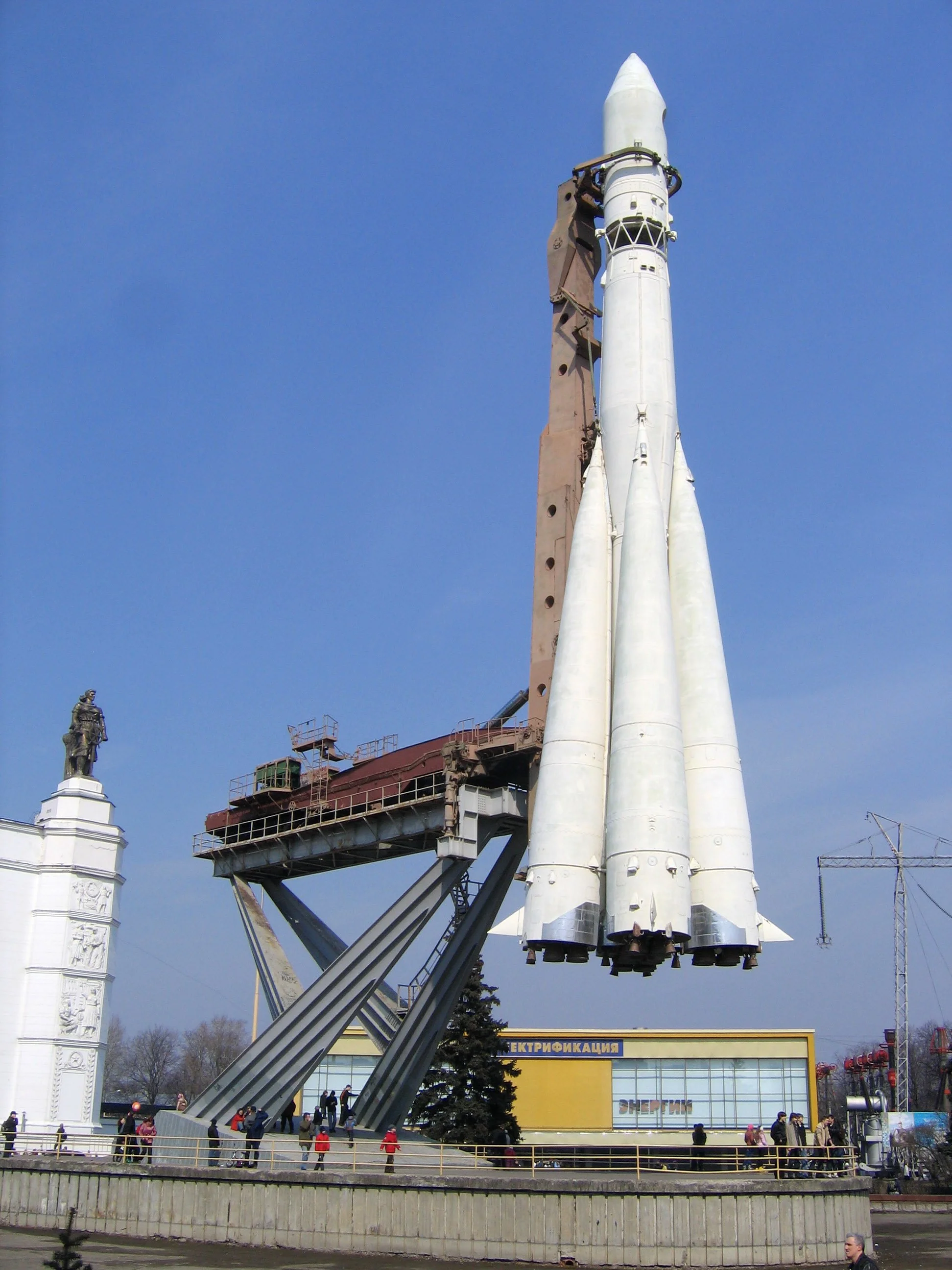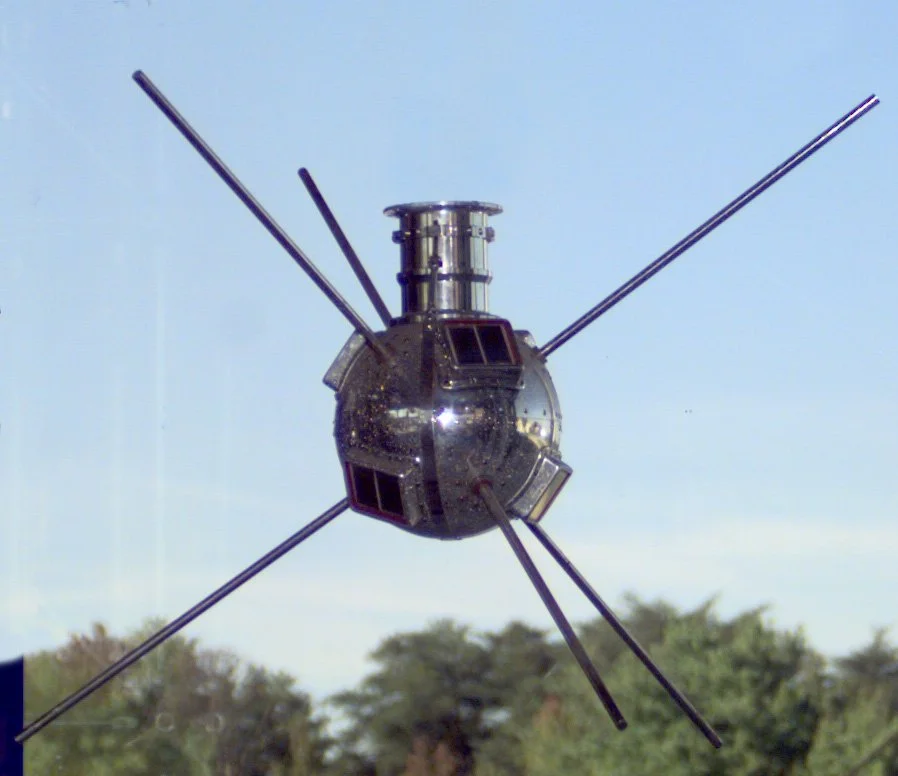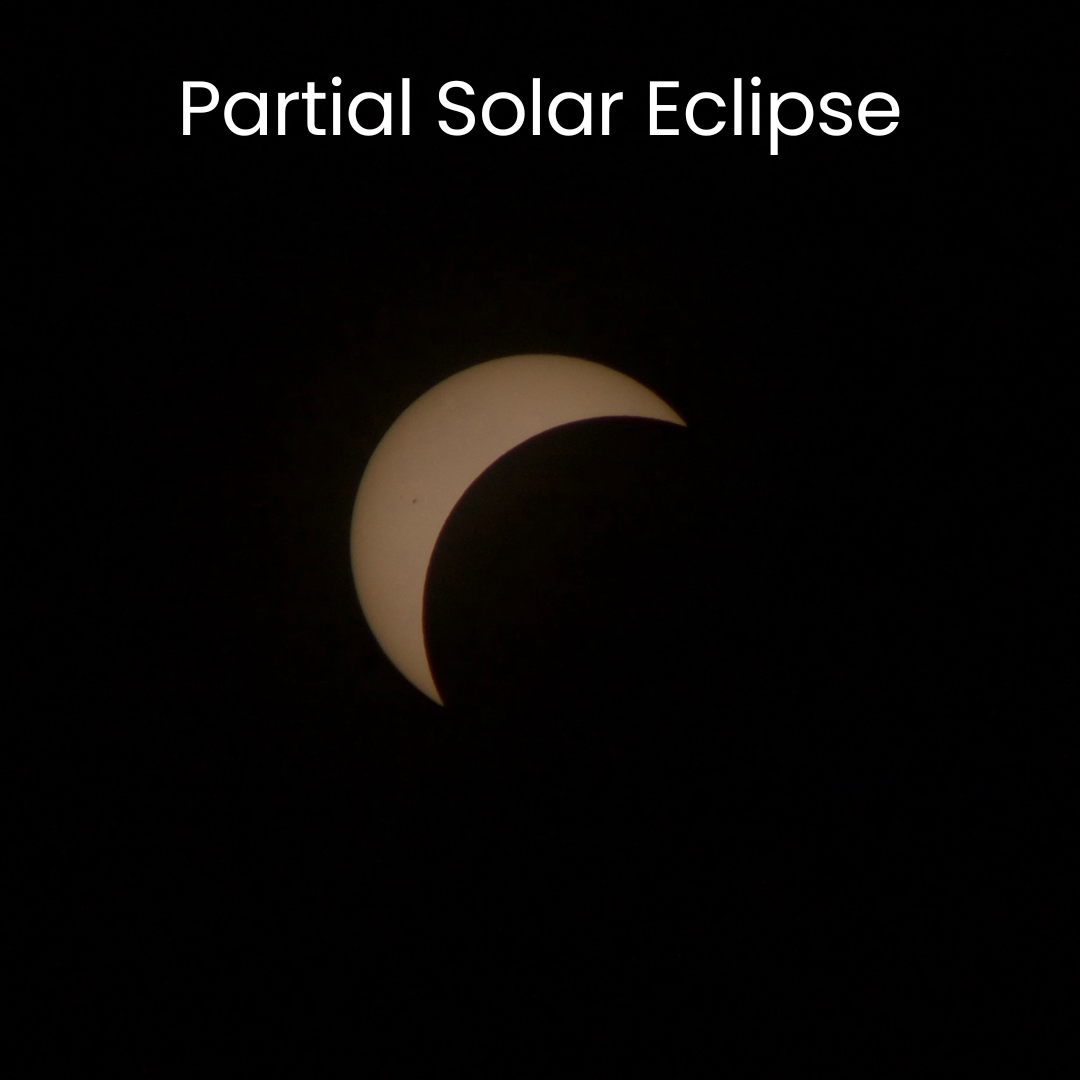Space Questions for the Everyday - Volume IV Elementary Edition
Corinne Moore, Technical Business Development Lead
4 minute read
Welcome back to Space Questions for the Everyday! For Volume IV, we have some very special questions from a 5th-grade classroom at the N.I.C.E. Community School District from Marquette County, where Kall Morris Inc (KMI) is headquartered. Recently, KMI’s Robotics Engineer, Preksha Sanjay Madhva, and Director of Operations, Liza Fust, talked to the students. They had some follow-up questions for us! Today, we’ll be providing answers on hot topics, including space debris, the next eclipse, and why space is such an important place for humanity to be.
Do you have a burning question you’d like to see answered in future publications? Send your questions to questions@kallmorris.com and you just might see your question featured in our next issue.
What was the first recorded space debris? – Asher
R-7-rocket on display in Moscow (Wikimedia Commons)
Vanguard 1 (NASA)
The first ever piece of space debris can be traced back to the first satellite placed in orbit on October 4, 1957, by the USSR: Sputnik-1. The R-7 rocket that carried it to space became debris the moment it ran out of fuel and remained in orbit. Unlike many pieces of debris, this rocket body reentered the atmosphere shortly after on December 1, 1957 and no longer presents a hazard. On the contrary, Vanguard 1 was a small satellite launched by the United States in March of 1958 and remains the oldest debris object in orbit today.
What is the most space debris ever recorded in space? – Flynn
Today’s orbital environment has the most debris it has ever had, and without a solution, tomorrow will have even more. When it comes down to the numbers, that answer relies on your parameters. In the case of this question, let’s limit ourselves to talking about debris that are larger than 10cm, or about the size of a bagel. According to the European Space Agency (ESA), as of December 2023, there are approximately 36,500 debris objects greater than 10cm in orbit around the Earth. If we examine debris objects between 1cm and 10cm, that count jumps to 1,000,000. That’s a lot of garbage!
Will you ever be able to clear all the space debris? – Sabrina
With a human presence in space, debris will always be something we need to manage. An easy comparison would be looking at your own household. Recycling bottles, using reusable shopping bags, and reducing reliance on single-use plastics are all valiant efforts towards keeping Earth clean, but producing zero waste in the world we live in today just isn’t possible. Every product you buy has some kind of environmental impact, and the same goes for every object launched into space. Much like the camping motto to “leave it better than you found it,” we believe orbital debris cleanup efforts can make a dent in the junk problem while working to make sure it never gets this bad again. Overall, it will take an international effort for everyone to do their fair share and reduce the creation of orbital debris in the first place.
When will the next eclipse happen after this one coming up? – Madison
Eclipse Phases (Gabby Muehlenbeck and Jim Westervelt)
First, let’s talk about the different types of eclipses, as that can drastically affect how long it will be before we get to see this phenomenon again! This past eclipse on April 8, 2024, was a total solar eclipse, which happens when the Moon travels between the Sun and the Earth at just the right distance that for a short period of time the Sun is completely blocked (hence the name, total eclipse). The two other types of eclipses are annular and partial. An annular eclipse happens when the Moon is too far from the Earth to block the sun entirely, so instead you still see a sizable ring of the Sun around the Moon. A partial eclipse is exactly what it sounds like: the Moon crosses the Sun but they don’t perfectly align with each other. Which type of eclipse you want to see and where you are on the Earth at the time will determine how long you need to wait. Per NASA’s Future Eclipse website, North America can expect to see a partial eclipse as soon as March 29, 2025. You’ll have to wait quite a bit longer to see a total solar eclipse in the United States, as the next one will happen on August 22, 2044, and be visible from Montana, North Dakota, and South Dakota.
Why is space so important? – Nala
Amazing Andromeda Galaxy (NASA/JPL-Caltech)
Space provides humanity with a lot of different things that we usually don’t notice until they’re not around. Satellites provide and transmit data all across the globe for things like GPS, cell phone service, government communications, environmental monitoring, internet service, and more! The International Space Station (ISS), known for hosting astronauts, houses a multitude of science experiments designed to help us learn more about our world. Some of the most famous experiments involve the study of human cells in space to investigate therapies for cancer. There’s even an area for growing plants that helps us learn which plants may grow best in space and be suitable for long trips between planets.
Edge-on galaxy (NASA/Space Telescope Science Institute)
KMI would like to extend a huge “Thank You!” to the students over at the N.I.C.E. Community School District for providing the questions in this latest issue of Space Questions for the Everyday. To the future Space Rangers of tomorrow: “per aspera ad astra!”
P.S.
That’s Latin for “through hardships to the stars.”
Recommended column to read next: Why Space Maters Part 1: Space Is Our Past










